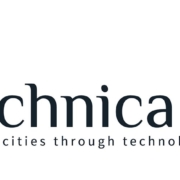Ramani Duraiswami is the first person to admit that you have to try his technology to truly understand what it is.
Duraiswami is the founder of VisiSonics, a company spun out of the University of Maryland that works with three-dimensional sound.
Based on name alone, 3-D sound is confusing.
But think of it this way: Instead of listening to music through earbuds and hearing it in both ears, imagine that when using a virtual reality helmet, you would experience sound from all sides of your brain — making it seem like a bird is flying over top of you, or someone is walking behind you.
VisiSonics’ technology is being licensed by Oculus, a California-based virtual reality company that is owned by Facebook. Oculus just released the Rift this week, the first high-end consumer VR headset to hit the open market. VisiSonics’ 3-D sound technology is major piece of the headset.
Preorders of the headset sold out quickly in February, and orders already started getting backlogged when they went live on Monday. Amazon’s website says an order placed on Wednesday wouldn’t ship until April 23.
The headset alone costs $599, but you need a high-end PC with a large amount of processing power to use it. An Oculus Rift bundle that comes with a PC powerful enough to support the headset starts at $1,599.
Oculus users can transport themselves into a number of virtual spaces through the headset, from VR video on apps like YouTube, to video games produced by major companies.
The Rift is the only consumer headset hitting the market this year to be using VisiSonics’ technology — but companies like Sony and HTC have their own mass-market headsets releasing later this year.
When using a VR helmet, VisiSonics’ technology will allow you to hear the sound from all angles.
“Our way of thinking was that we wanted to understand how sound in the real world goes from a source location to your ears,” he said. “We wanted to replicate the way in which sound bounces off walls, bounces off materials. It comes to your ears, and it bounces inside your ear canal, down your body and heads to your brain.”
Duraiswami’s company has grown to eight employees since it officially spun off from the university in 2012, but he is still a professor at the college and VisiSonics is based out of Maryland’s startup lab.
The technology dates back as far as 12 years ago, when Duraiswami began experimenting with it at the university. He struck gold in 2014 when the company officially signed the licensing deal with Oculus. Duraiswami couldn’t discuss the specifics of the deal.
“It came about when we met them at the [Game Developer’s Conference] and showed them our demo,” Duraiswami said. “At that point, they had not yet been bought by Facebook and they were interested in our tech.”
Oculus’ co-founder, Brendan Iribe, graduated from Maryland, and recently donated $31 million to construct a new computer science and innovation center on campus — construction on which will begin by the end of April.
Now that the Oculus Rift is out, what’s next for VisiSonics?
Duraiswami said the company will look to make deals with other headset makers in the future, but they’re also developing their own products to eventually hit the market.
For example, a program that will help blind people learn to cross the road based on sound alone, and a device that will capture 3-D sound and play it back as it was intended to be heard.
“We want to be the audio solution for all the headset makers and the content producers who all help to make the VR experience better,” Duraiswami said. “We just want to make VR audio as good as audio is in the real world.”
Read more VisiSonics news




